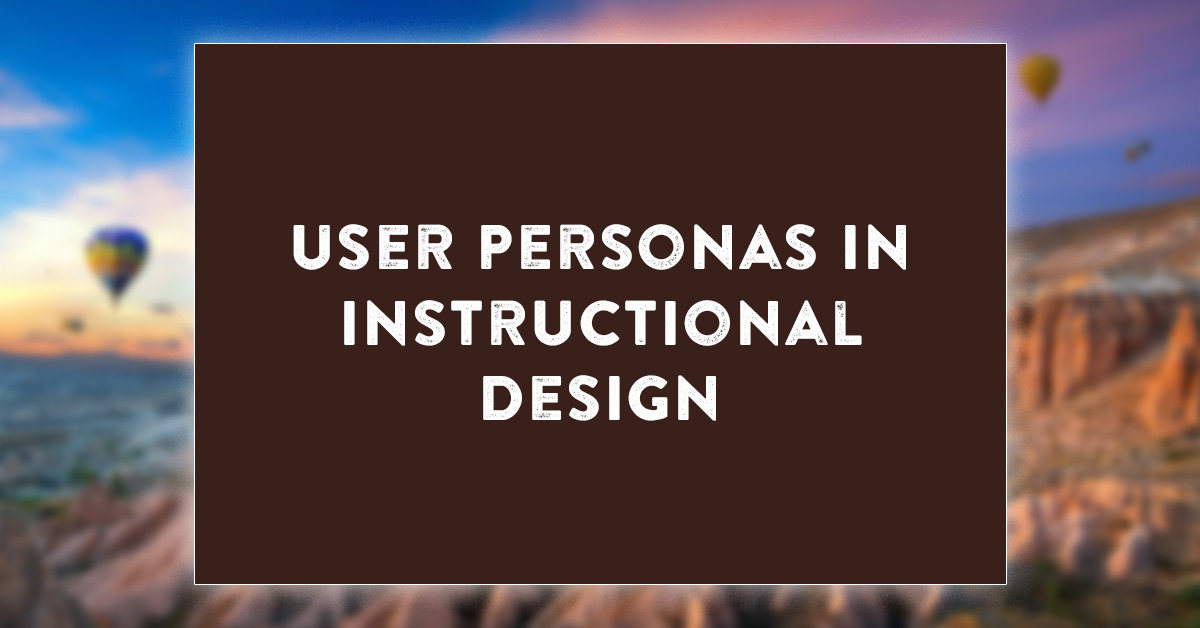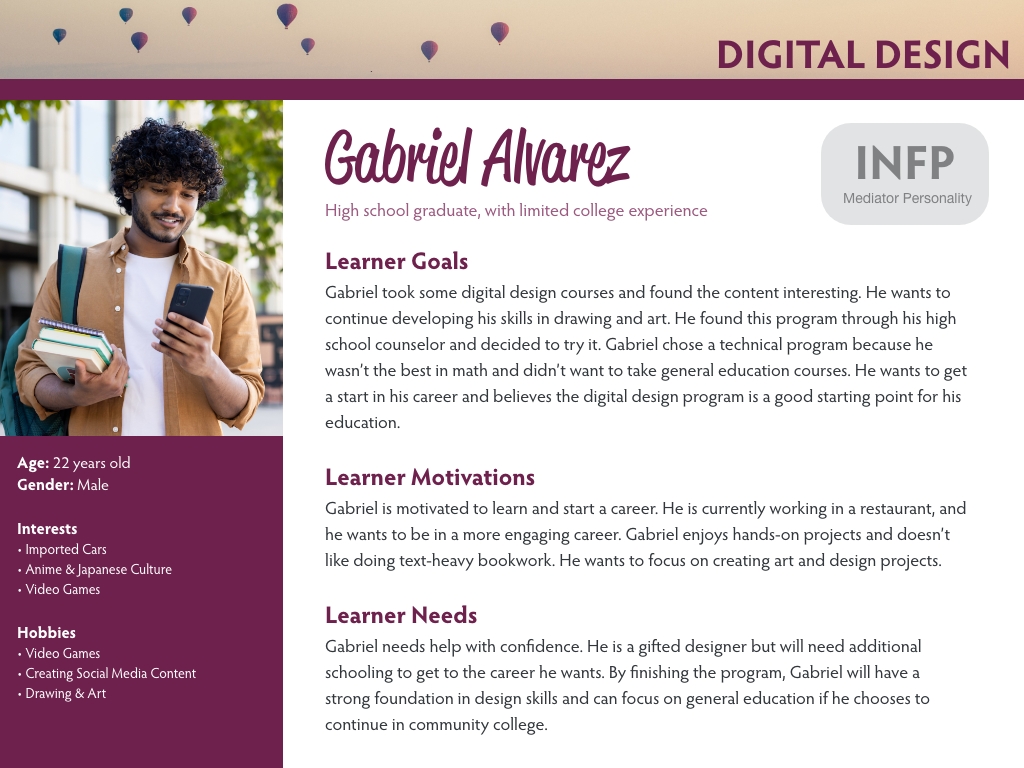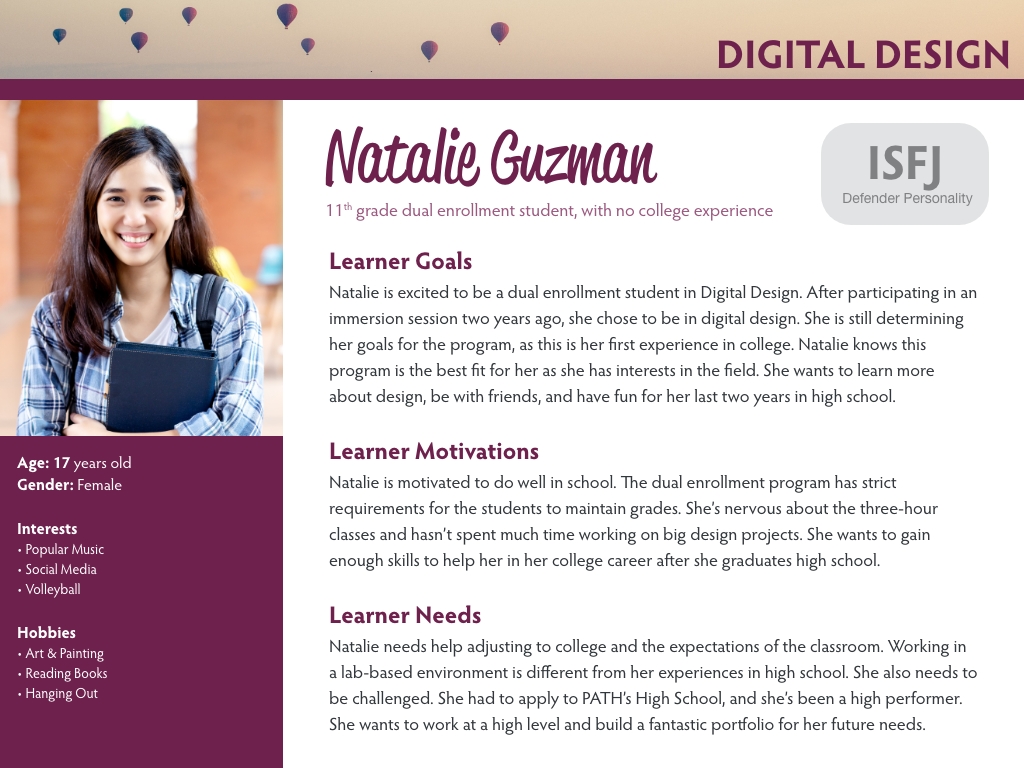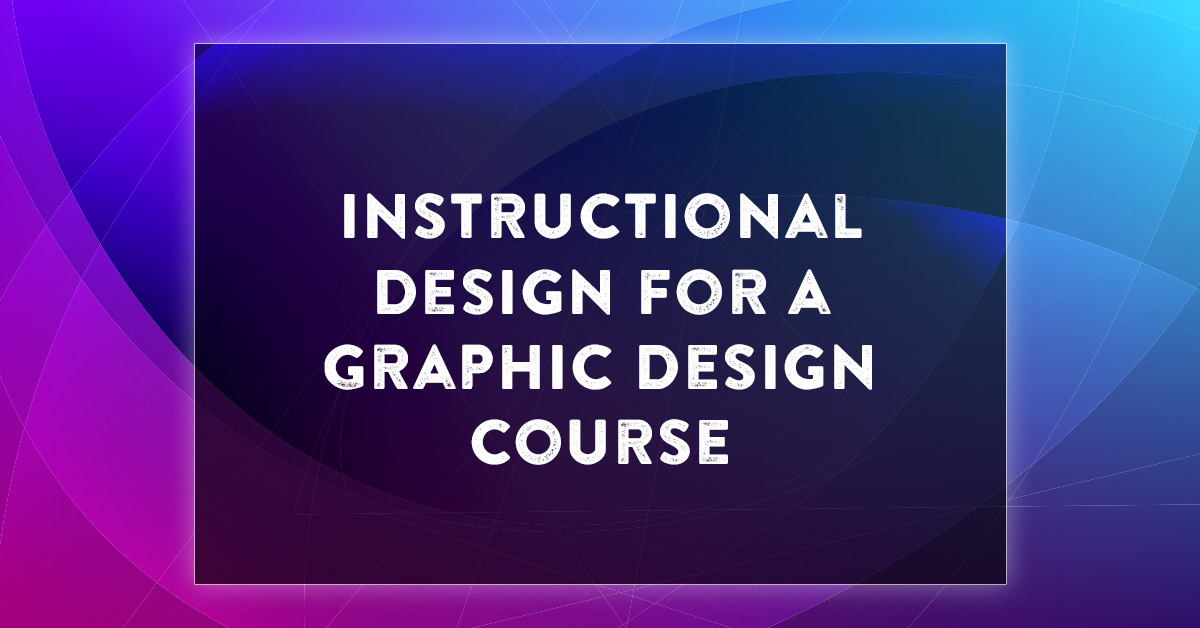Using user personas in instructional design is a powerful tool to help designers create more effective and engaging learning experiences. By developing user personas representing the target audience, designers can better understand the learners’ needs and preferences and design learning experiences tailored to meet those needs.
Key Benefits
One of the key benefits of using learner personas is that they help designers to develop empathy for the learners. As part of the Design Thinking Process, when designers can connect with the learners on a personal level, they are better able to create learning experiences that are more engaging, relevant, and effective.
Another benefit of using personas in instructional design is that they help designers focus on the learners’ needs. By creating detailed personas that describe the learners’ characteristics, needs, and goals, designers can gain a better understanding of the learning context and design learning experiences that are more effective.
Personas can also help designers to identify gaps in their learning experiences. By creating multiple personas representing different types of learners, designers can identify areas where the learning experience may not meet specific learners’ needs. For example, suppose a persona representing a struggling learner cannot succeed in the learning experience. In that case, the designer can identify areas where additional scaffolding and support may be needed.
Information to include
When creating user personas, it’s essential to include information that describes the target audience’s characteristics, needs, and goals. This information can include demographic details, such as age, gender, and education level, as well as psychographic details, such as interests, hobbies, and personality traits. Designers should also consider the learners’ goals and motivations for engaging with the learning experience and any challenges or barriers they may face. Including this information in the user personas helps designers develop empathy for the learners and design learning experiences tailored to their needs.
Case Study
As a Digital Design program instructor at an adult technical college, I have employed user personas to help me empathize with my users as I develop learning. To start the project, I had to look at key demographics for the students. In the classroom, I have two distinct populations of students: adults and dual-enrollment high school students. I decided to build two personas based on the two unique student types. To help provide more context to the user personas, I also pulled data from the personality quizzes the students completed when building a personality profile at the beginning of the course. I describe two unique students in the classroom with these two items and some simple demographic data.
Conclusion
Using personas in instructional design is a powerful technique to help designers create more effective and engaging learning experiences. By developing user personas representing the target audience, designers can better understand the learners’ needs and preferences and create learning experiences tailored to meet those needs.






